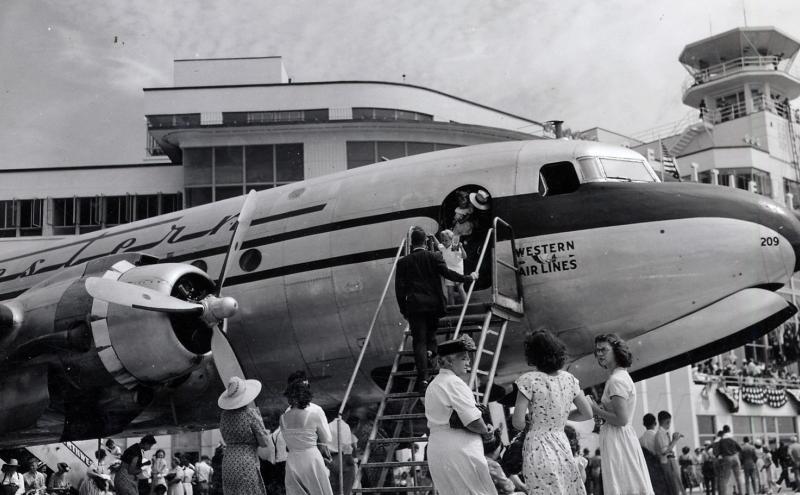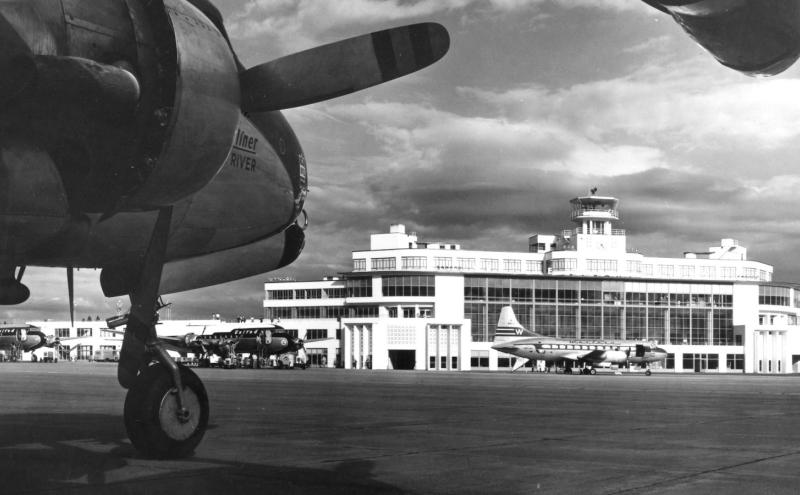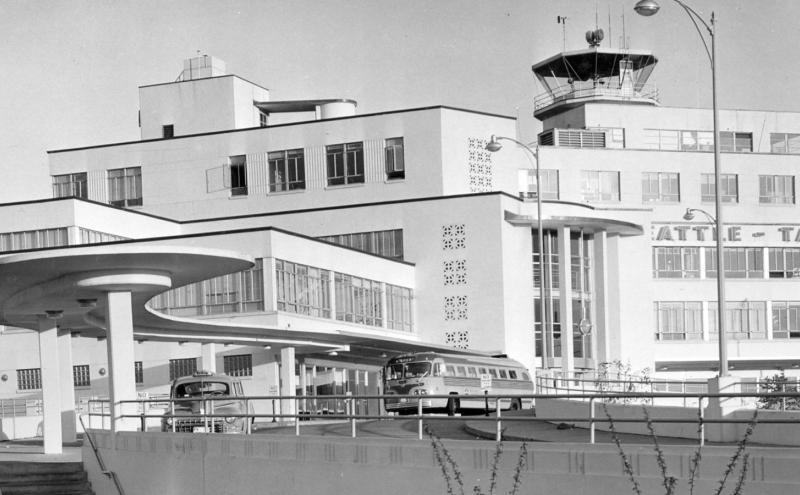
Adapted from “Rising Tides and Tailwinds — The Story of the Port of Seattle” and HistoryLink.org
- Learn about the birth of the airport in the 1940s
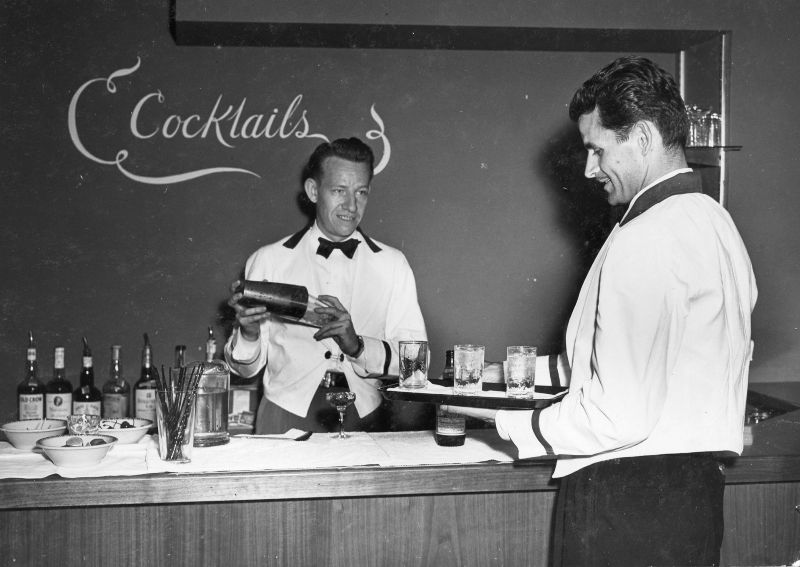
The new SEA Airport was thriving with its barber shop, gift shop, dining room, and even a Santa Claus.
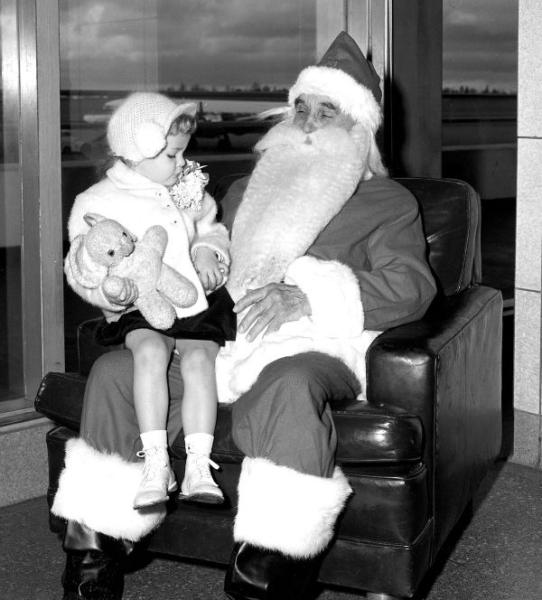
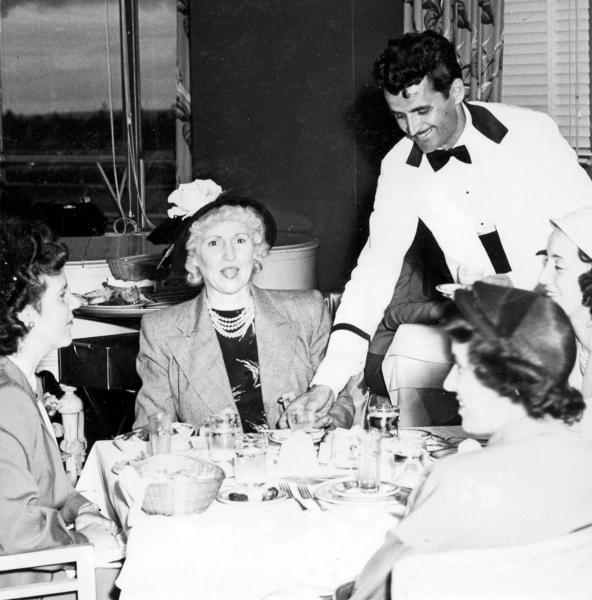
In baggage claim, your luggage was handed to you.
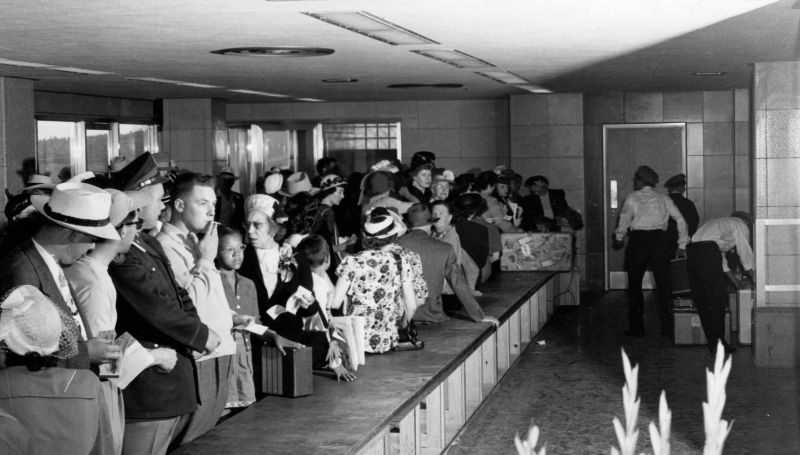
Growth at SEA
But there were already space constraints. In its first full year of operation, more than half a million passengers — 86% of all Seattle-area commercial air traffic — and 6,234 tons of air freight passed through the new airport's gates.
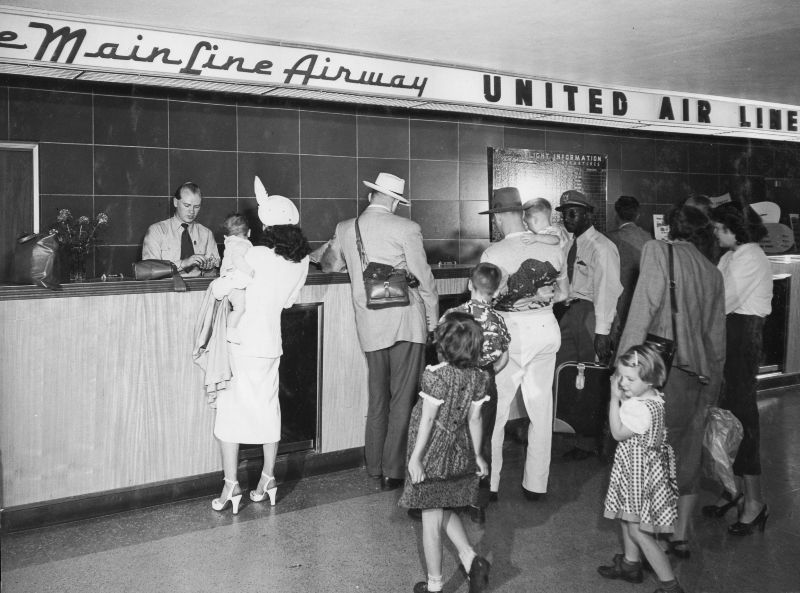
This volume of traffic, and the introduction of faster and larger aircraft such as the four-engine DC-6, quickly strained the capacity of the main north-south runway. Boeing was beginning to explore development of a passenger jet, and the larger size and faster speeds of prompted runway and terminal expansion. SEA Airport initially had four crosswind runways designed for airplane landings and takeoffs in almost any wind direction. As the concourse extended north and south, and the new airplanes were better able to handle crosswinds, the crosswind and perpendicular runways were eliminated, while the north-south runway was repeatedly lengthened (two parallel runways were later added).
- Learn more about the runway configuration and how it changed
From the late 1950s through the mid-1960s, four concourses were added to the main building, increasing the number of airplane gate positions to 21. The Port added first 80, and then another 170 acres to the footprint of the airport.
1951
Traffic soared with the arrival of Trans-Canada Airlines on August 1, 1951, followed by Alaska Airlines, when it won federal approval for scheduled operations later that same month.
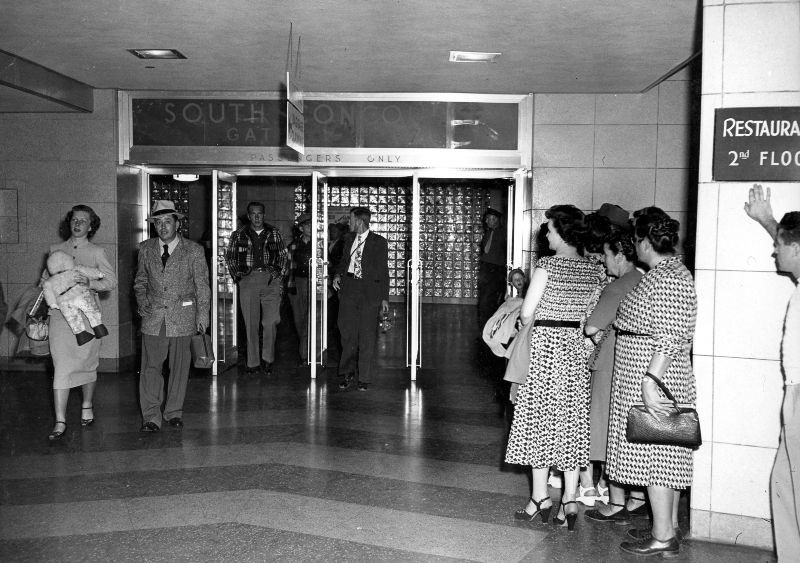
1952
The Flying Tiger Line, many of whose pilots transported troops and equipment to the war, began regular airfreight service to and from SEA.
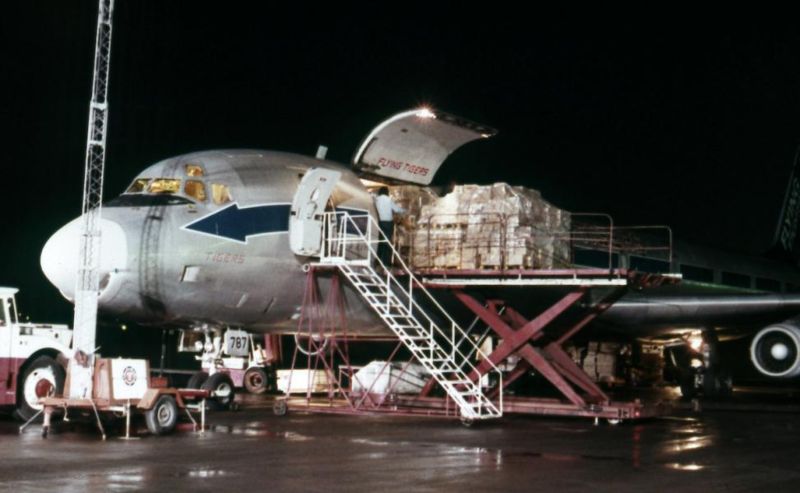
1953
Pan Am and Western airlines permanently shifted over from Boeing Field the following year, followed by Pacific Northern Airlines.
1954
The Boeing 707, first flown as the Dash-80 on July 15, 1954, became the prototype for large jet airlines and soon revolutionized travel. That same year, the number of passengers served by SEA surpassed the one million mark.
June 11, 1954
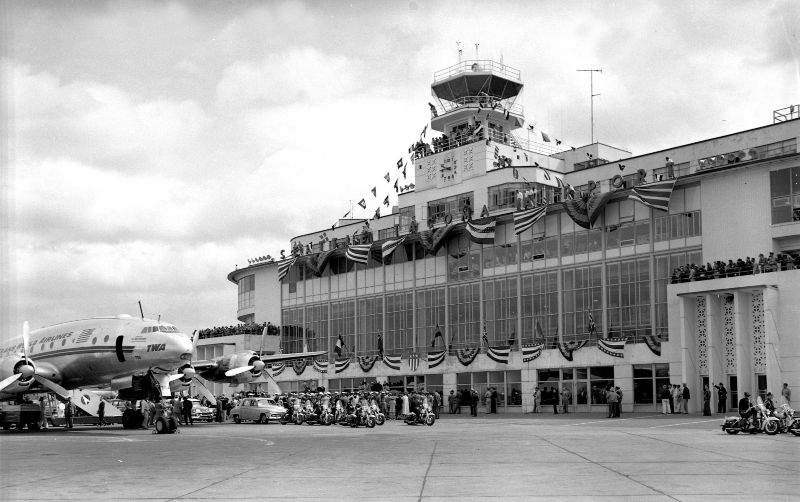
Haile Selassie, the Emperor of Ethiopia, arrived at the airport in the morning. He attended a tour at Boeing, then traveled to the naval shipyard in Bremerton. His entourage checked into the Olympic Hotel and attended a reception at the Rainier Club.
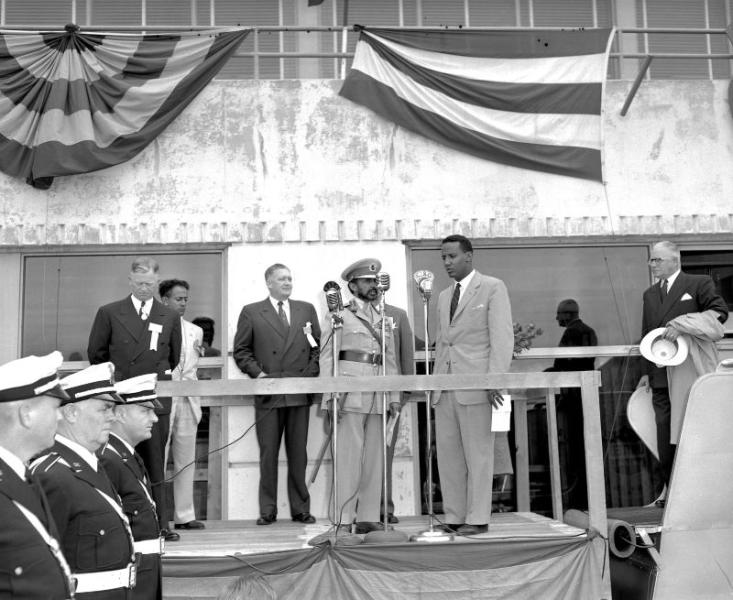
1955
The first parking lot opened for 527 cars, and was quickly expanded in 1957.
1956
SEA Airport was designated as a hub for shipping all first-class mail to Asia from west of the Mississippi. The post office airmail facility built the next year saw huge increases in airmail from our region through the airport to southwest Asia as U.S. involvement in the Vietnam war increased.
1959
Construction on the D Concourse begins
June 28, 1959
Japan Airlines became the first Asian-flag airline to operate at SEA when its DC-7 Supercourier arrived from Tokyo on June 28.
October 3, 1959
With new lights and aircraft surveillance radar installed, SEA inaugurated regular jet airline service on October 3, 1959, when a Pan Am 707 took off for Honolulu. Construction of the Port’s first professional fire department opened in time for this same flight, taking over responsibility from volunteers and airlines.


